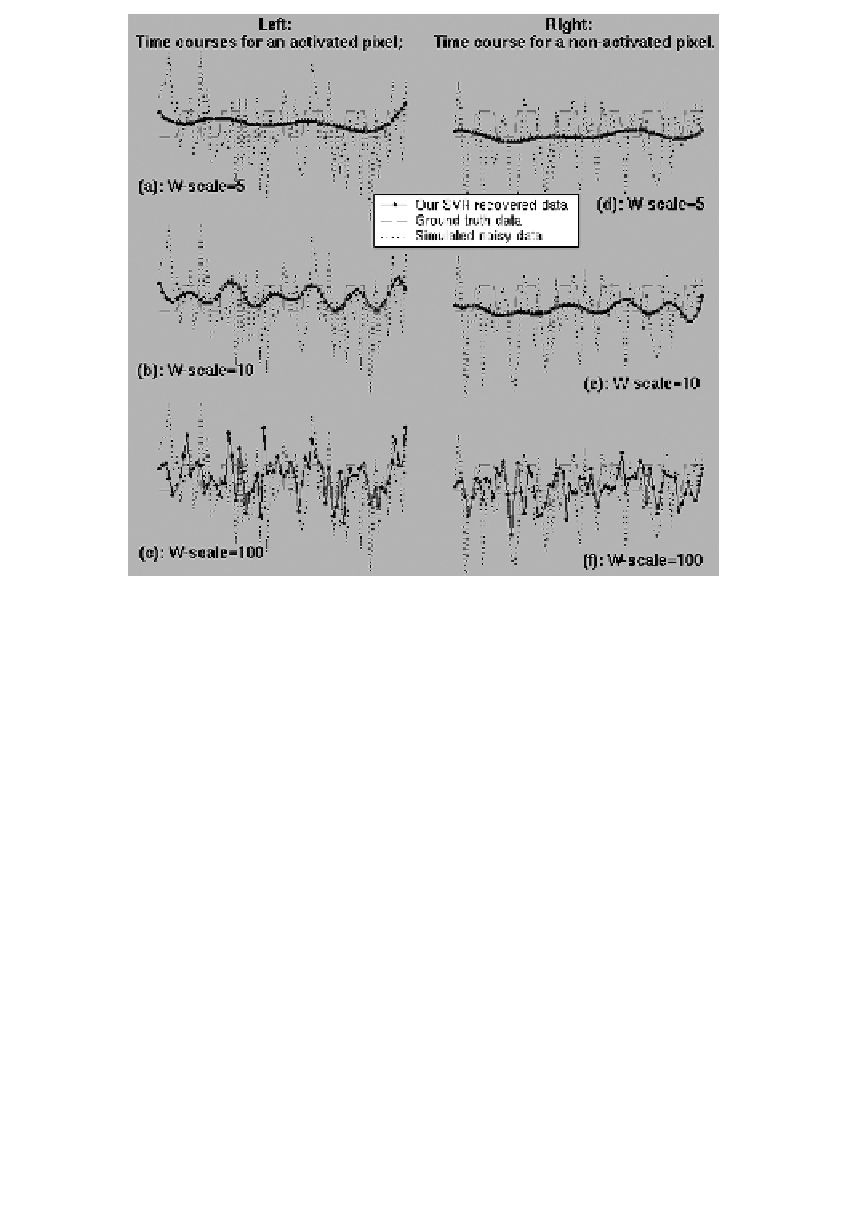Image Processing Reference
In-Depth Information
FIGURE 18.5
(See color insert following
page 306
). Effects on time course with varying
W-scale
for an activated pixel and a nonactivated pixel in the ST-SVR approach (
W-model
= 0).
measure, whose value could be empirically predetermined as a constant or estimated
from regression residual analysis (40), although extra computation is needed.
For simulations on the data generated in Section 18.4.2,
Figure 18.6
demon-
strates the effects of varying
W-model
by showing the recovered time series when
W-scale
0, which corresponds to zero frequency (DC component). For the acti-
vated pixel, as
W-model
increases, the temporal model has stronger and stronger
effects during the regression and data fitting (Figure 18.6 left). Note that because
these are simulated data and no real physiological or neuronal activities are involved,
the recovered time courses do not show any lag or undershoots in the activated
pixel. In fact, the recovered time course accurately restores the ground truth time
course (Figure 18.6c), i.e., the boxcar function. For the nonactivated pixel, as shown
in Figure 18.6 right, the model term barely affects the data regression.
=
18.4.5
G
ENERALIZATION
TO
M
ULTISESSION
S
TUDIES
Although so far only single-session analyses are discussed, typically fMRI exper-
iments are run several times, either on the same subject (multirun) or with several






































Search WWH ::

Custom Search